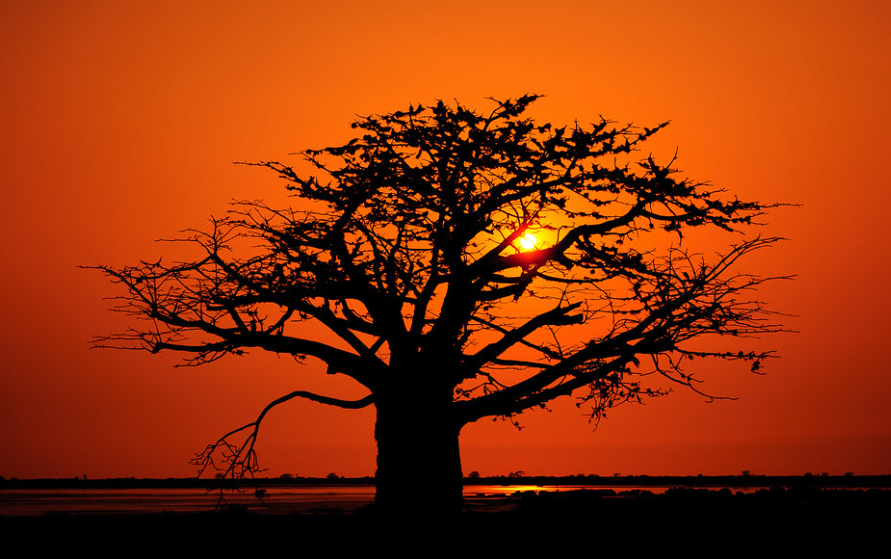Angola, known for its diverse natural beauty and rich cultural heritage, is home to the remarkable Angola National Tree, the Imbondeiro tree. As a content writer and country expert, I invite you to explore the wonders of this majestic tree and delve into its significance to the people of Angola. In this article, we will discuss the Imbondeiro tree's physical characteristics, cultural importance, medicinal and nutritional uses, environmental benefits, conservation efforts, and its presence in art and literature.
Angola, located in Southern Africa, boasts a unique ecosystem with a wide variety of flora and fauna. The Imbondeiro tree, scientifically known as Adansonia digitata, holds a special place in the hearts of Angolans, earning the distinction of being the country's national tree. Let us embark on a journey to understand why this tree holds such significance.
Overview of Angola
Before we delve into the Imbondeiro tree, let's take a brief look at Angola. Bordered by the Atlantic Ocean, Angola is a country renowned for its stunning landscapes, vibrant cultural heritage, and diverse wildlife. With its tropical climate and vast natural resources, Angola provides a conducive environment for the growth of unique and iconic flora.
Importance of National Trees
National trees represent the cultural identity and natural heritage of a country. They serve as symbols of pride, unity, and conservation. National trees play a vital role in promoting ecological awareness and protecting the environment. The Imbondeiro tree, as Angola's national tree, carries great importance in these aspects.
Imbondeiro Tree: Angola National Tree
The Imbondeiro tree, also known as the baobab tree, stands as a living testament to the magnificence of Angola's natural heritage. It is a deciduous tree that can grow to immense proportions, reaching heights of up to 25 meters. Its characteristic swollen trunk and sprawling branches make it a truly awe-inspiring sight.
Physical Characteristics of the Imbondeiro Tree
The Imbondeiro tree's physical features are unique and captivating. Its trunk, with a diameter of up to 11 meters, stores vast amounts of water, allowing the tree to survive in harsh and arid environments. Its bark is smooth and reddish-brown, while its leaves are compound and palmate. The tree bears large white flowers that bloom at night, emitting a delightful fragrance.
Cultural Significance of the Angola National Tree
In Angolan culture, the Imbondeiro tree holds deep-rooted significance. It is considered a sacred tree and a symbol of wisdom, longevity, and strength. The tree's longevity is attributed to its ability to store water, with some trees surviving for thousands of years. It serves as a gathering place for communities, providing shade and shelter during communal events and celebrations.
Medicinal and Nutritional Uses
Apart from its cultural importance, the Imbondeiro tree offers various medicinal and nutritional benefits. The tree's leaves, fruits, and bark are utilized in traditional medicine to treat various ailments such as digestive issues, respiratory problems, and skin conditions. The fruit of the Imbondeiro tree is rich in vitamin C and other essential nutrients, providing a valuable food source for both humans and wildlife.
Environmental Benefits
The Imbondeiro tree plays a vital role in maintaining the ecological balance of Angola's landscapes. Its extensive root system helps prevent soil erosion and contributes to the stability of riverbanks. Additionally, the tree's ability to store water within its trunk enables it to survive in dry regions, making it an essential resource during periods of drought. The Imbondeiro tree also acts as a habitat for various bird species, insects, and small mammals, promoting biodiversity within its surroundings.
Conservation Efforts for Angola National Tree
Recognizing the ecological importance and cultural significance of the Imbondeiro tree, Angola has taken steps to protect and conserve this national treasure. Conservation initiatives have been implemented to preserve Imbondeiro tree populations and raise awareness about their significance. Efforts include establishing protected areas, promoting sustainable harvesting practices, and educating local communities about the tree's importance in their heritage and ecosystem.
Angola National Tree in Art and Literature
The Imbondeiro tree has not only captivated the hearts of Angolans but has also inspired artists, writers, and poets throughout history. Its majestic presence and symbolic value have found their way into numerous pieces of art and literature. Paintings, sculptures, poems, and songs often pay tribute to the beauty and cultural significance of the Imbondeiro tree, immortalizing its image and narrative for future generations.
FAQs
Q1: Is the Imbondeiro tree endemic to Angola?
No, the Imbondeiro tree can be found in several African countries, but it holds special significance as Angola's national tree.
Q2: Can the Imbondeiro tree be grown outside of Africa?
Yes, the Imbondeiro tree has been successfully grown in various regions worldwide with similar climates, although it thrives best in its native African habitats.
Q3: Are there any legends or folklore associated with the Imbondeiro tree?
Yes, the Imbondeiro tree features prominently in African folklore, with tales and myths passed down through generations, symbolizing wisdom, resilience, and connection to ancestral spirits.
Q4: Are there any threats to the Imbondeiro tree's conservation?
The Imbondeiro tree faces threats such as deforestation, climate change, and unsustainable harvesting practices. Conservation efforts aim to mitigate these risks and ensure the tree's long-term survival.
Q5: Can parts of the Imbondeiro tree be used in modern medicine?
While traditional medicine utilizes certain parts of the Imbondeiro tree, further research is needed to explore its potential in modern medicine and pharmacology.
Conclusion
In conclusion, the Imbondeiro tree stands as a proud symbol of Angola's natural and cultural heritage. Its towering presence, cultural significance, and numerous benefits make it a national treasure worth celebrating and protecting. From its physical characteristics and environmental contributions to its role in traditional medicine and artistic inspiration, the Imbondeiro tree encapsulates the essence of Angola's beauty and resilience. Let us cherish this magnificent tree and strive to ensure its preservation for future generations.
References
- World Agroforestry Centre. (n.d.). Adansonia digitata. Retrieved from https://www.worldagroforestry.org/treedb2/speciesprofile.php?Spid=1819
- The Plant List. (2013). Adansonia digitata. Retrieved from http://www.theplantlist.org/tpl1.1/record/kew-2622670
- Kupitz, J. (2006). Baobabs: Giants of the African Savanna. Struik Publishers.
